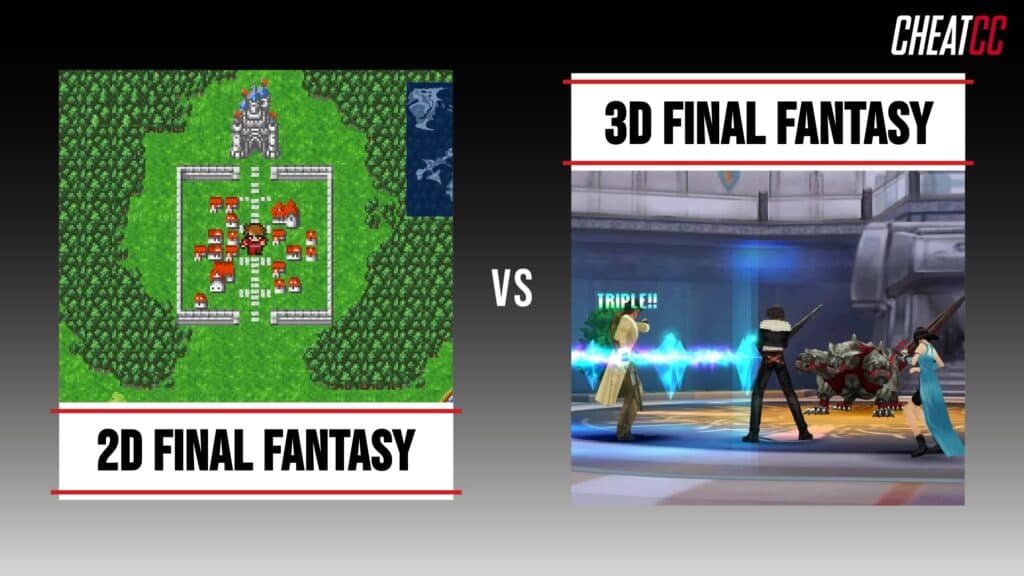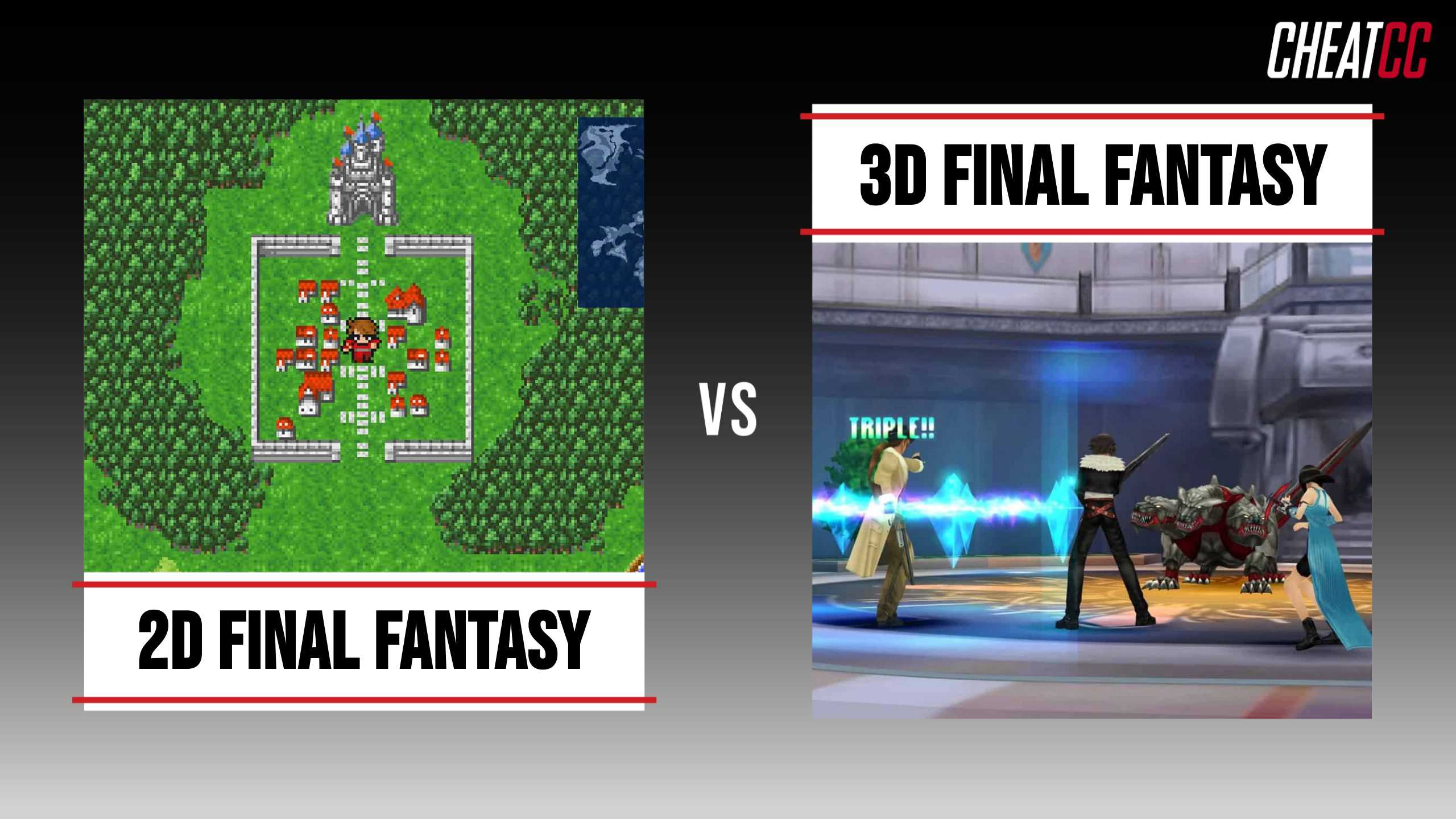Ask any fan of the Final Fantasy series which era in the series’ history represents its creative and critical peak and you’ll be sure to spark up a lively discussion about the differences between the franchise’s 2D origins and its modern 3D entries. Especially in the wake of Square Enix releasing the Pixel Remasters collection, which package the first 6 games in the series with more consistent visual presentation and some excellent gameplay streamlining features, more players are getting to experience the beginnings of the franchise that would come to define the qualities of Japanese role-playing games for decades. And, even though the Final Fantasy series’ 3D era is longer than its 2D beginnings at this point, there’s still a strong contingent of fans that think the series’ peak lies in the early games.
But, while the original 6 games in the series are responsible for establishing the bar of quality that Final Fantasy is synonymous with and influencing an entire generation of game makers, the 3D games in the series are inarguably more influential in helping to bring the Final Fantasy name to the masses. Additionally, it’s one of the 3D entries in the series that arguably helps to shift the needle of the game industry toward Sony’s favor after Square’s infamous decision to partner with the company following nearly a decade of success with Nintendo. Thanks to Final Fantasy‘s anthologic nature, each game in the series offers something different, but there’s a clear delineation between its 2D past and 3D present.
2D Final Fantasy vs. 3D Final Fantasy: Side-by-Side Comparison

Ironic that 10 years after the series’ beginnings as a last-ditch effort to keep parent company Square afloat, the first 3D Final Fantasy helped the company reach its greatest commercial peak. In fact, Square has arguably been chasing the success of Final Fantasy VII since 1997, with diminishing returns in each subsequent mainline series entry outside of a few notable exceptions. Interestingly, the Final Fantasy series’ evolution runs concurrent to the evolution of the medium of video games, and regardless of what fans think about it being a “true” Final Fantasy, there’s little denying that Final Fantasy XVI is the best looking game in the series thanks to the affordances of modern hardware.
| Characteristic | 2D Final Fantasy | 3D Final Fantasy |
|---|---|---|
| Origin Year | 1987 | 1997 |
| Origin Game | Final Fantasy (NES, Famicom, MSX) | Final Fantasy VII (PlayStation) |
| Number of Series Entries | 6 | 10 |
| Total Sales Across Era | ~25.85 million units | ~118 million units |
| Primary Hardware Partner | Nintendo | Sony |
| Metacritic Average | 81 | 82 |
| Playable on Modern Hardware | ✅ | ✅ (Except XI and XIII) |
| Entries with Turn-Based Combat | 6 | 6 |
| Entries with Real-Time Combat | 0 | 4 |
2D Final Fantasy vs. 3D Final Fantasy: 5 Must-Know Facts
Here are 5 must-know facts about the 2D Final Fantasy games vs the 3D entries:
- The 2D era of the series only lasts from 1987 through 1997, at which point the arrival of Final Fantasy VII signals the transition of the Final Fantasy franchise into the modern era of 3D gaming.
- Rather than regress the series, the spin-offs and other retro-inspired RPGs from Square occasionally utilize 2D visuals while mainline Final Fantasy games serve as a benchmark for visual fidelity and art design.
- Since the 3D era of the series is longer than its 2D origins, it should come as no surprise that the Final Fantasy franchise’s greatest success is from its 3D games. Cumulatively, every one of the 3D Final Fantasy games have more than 118 million units sold.
- While there are more games in the 3D era thanks to it simply being longer than the 2D era of the franchise, some of the games in the series’ original 2D era are still considered to be the greatest games in the series and some of the greatest RPGs ever made.
- The most recent game in the series, Final Fantasy XVI, is a distinct departure from the other 3D Final Fantasy games thanks to its introduction of real-time character action combat to the franchise. Other than Final Fantasy XVI and, to some extent, its predecessor Final Fantasy XV, the other 3D Final Fantasy games still maintain much of the series’ 2D DNA.
2D Final Fantasy vs. 3D Final Fantasy: Which Has Been Around Longer?
The 2D era of Final Fantasy begins with the first game in the series and its namesake in 1987 and technically continues up through 1997, though the last 2D mainline entry arrived on the SNES in 1994. The intervening years saw Square hard at work on the first 3D game in the series and first entry for Sony’s new console, the PlayStation. The release and reception of Final Fantasy VII would chart a bold course forward not just for Final Fantasy but for video games in general, and the impact of the title’s importance is felt even further in the recent remake trilogy based on Final Fantasy VII on modern consoles. Final Fantasy has 36 years of history, and only 10 of those belong to its 2D era.
2D Final Fantasy vs. 3D Final Fantasy: Series Origins and Series Evolution
The 3D era of Final Fantasy may hold claim to the series’ greatest sales figures and a slightly higher critical reception, but there’s little arguing against the importance of the 2D era. Without the first 6 games in the series, the later 3D entries would not be possible, and the first Final Fantasy is one of the most foundational games in the medium. Along with Dragon Quest, Final Fantasy is responsible for establishing the qualities of nearly all Japanese-developed role-playing games. Still, every new game in the Final Fantasy series looks to outdo its predecessors by using the combined knowledge and legacy of what came before.
2D Final Fantasy vs. 3D Final Fantasy: Going Mainstream
In addition to the series’ 3D entries providing a great visual reminder of the evolution of video game hardware over the last 25 years, they also showcase just how massive the medium has become in terms of its pop culture relevance. While the early years of Final Fantasy coincide with gaming being more of a niche hobby and still looked at as being more or less adjacent to toys, the modern era of gaming that begins with the release of the PlayStation (and coincides with the series’ switch to 3D with Final Fantasy VII) represents a seismic shift in perception of video games and the beginning of the medium’s upward trajectory in market share. Gaming may have used to be something looked at as a fad, but it’s now a multi-billion dollar industry.
2D Final Fantasy vs. 3D Final Fantasy: Quality vs Quantity
The first 6 games in the Final Fantasy series representing its 2D era are all great games in their own right, but truly only a handful of them are regarded as being still relevant in today’s gaming landscape. That said, those few titles arguably stand as some of the best games in the genre. Conversely, there are more games in the 3D era of Final Fantasy and their quality is more consistent, but only a handful reach the heights of the best entries from the 2D era. One interesting outlier is the series’ shift to MMORPG territory with Final Fantasy XIV, which is both one of the franchise’s greatest successes and a fan-favorite entry that continues to grow in popularity and reception.
Bottom Line
Final Fantasy IV and VI are inarguably two of the most important and greatest RPGs of all-time, but the sheer number of incredible games in the series beginning with its switch to 3D is hard to ignore. Final Fantasy VII is the kind of paradigm-shifting game that only comes around once in a generation, and its sequels all the way up through Final Fantasy X can make legitimate claim to being the best game in the series. Further, Final Fantasy XIV continues to be one of the most-loved and popular MMOs, with a dedicated fan base and continually growing community. There’s no denying the importance and prototypical nature of the 2D era, but it’s safe to say that Final Fantasy continues to trend upward, showing that its greatest moments may have yet to come.
